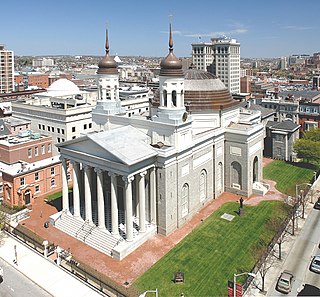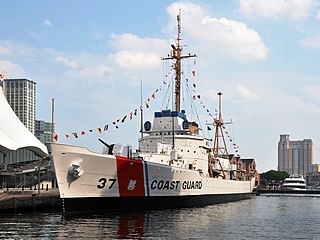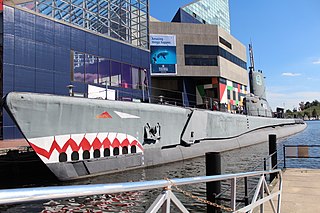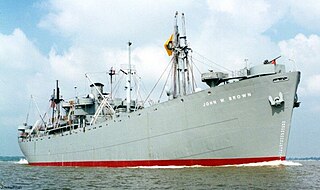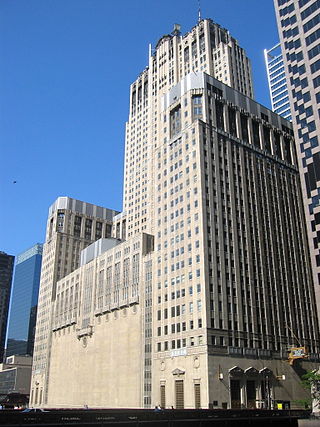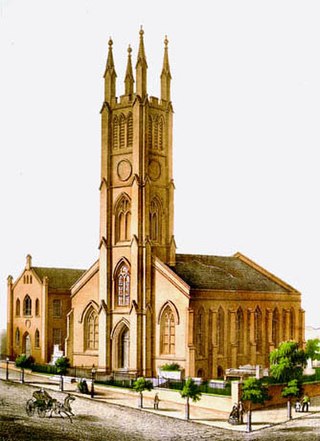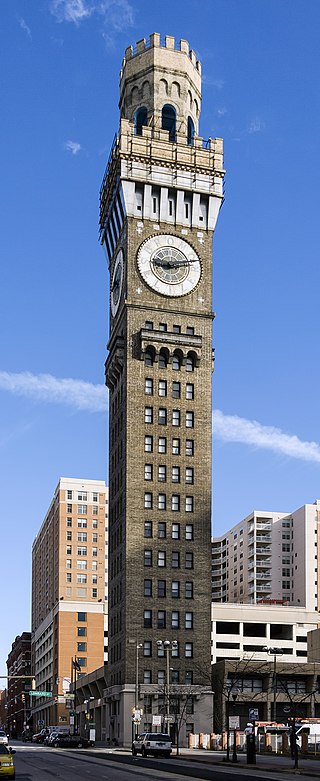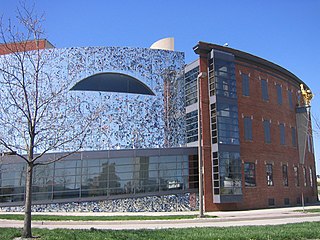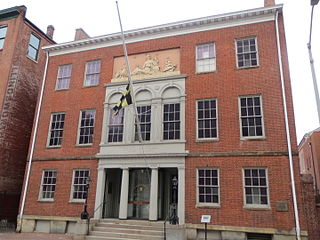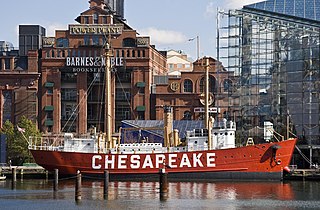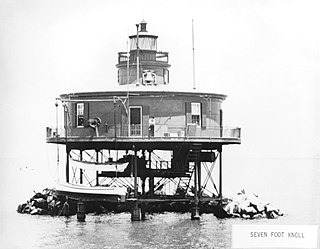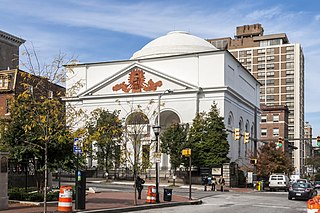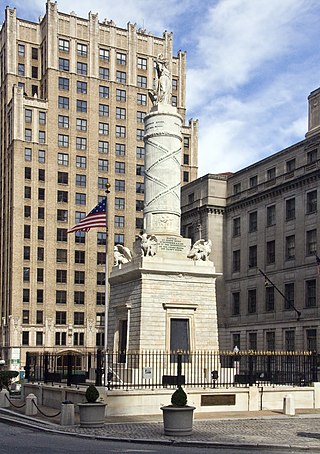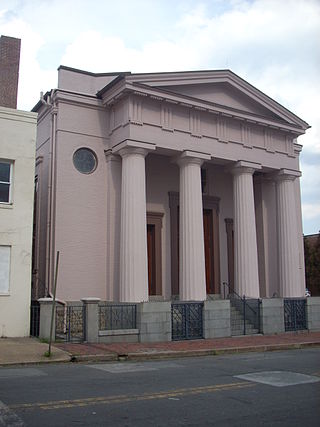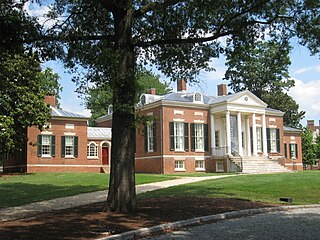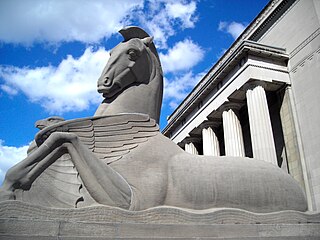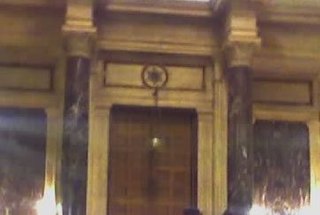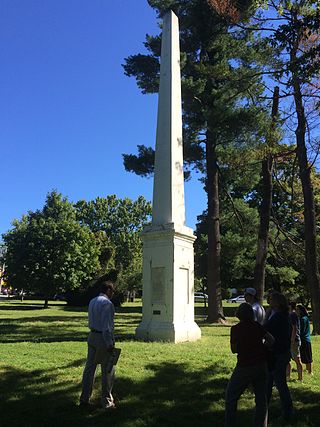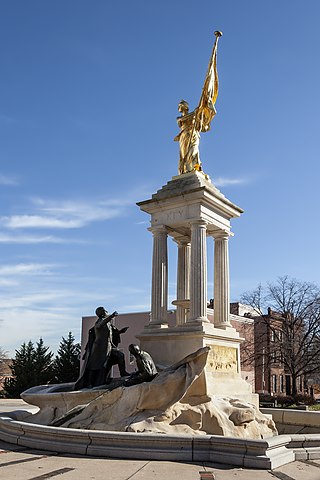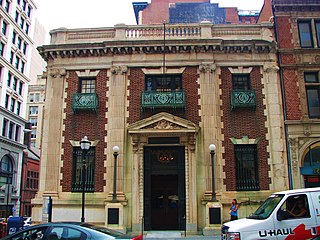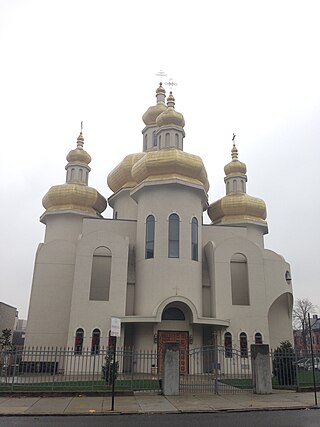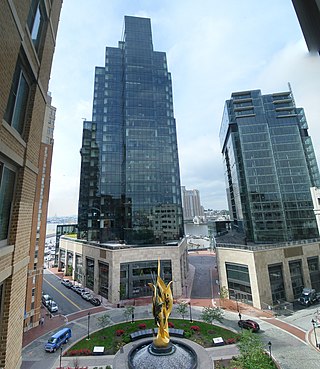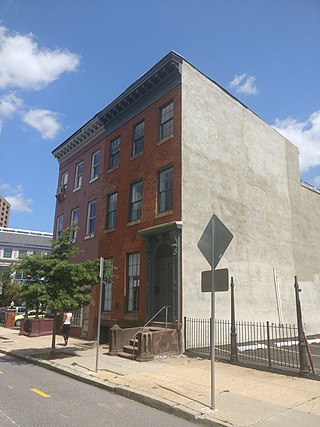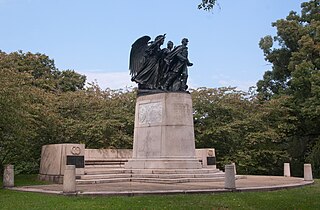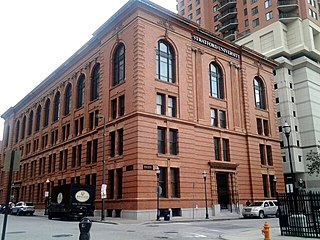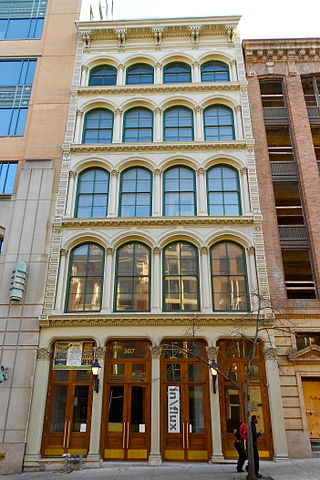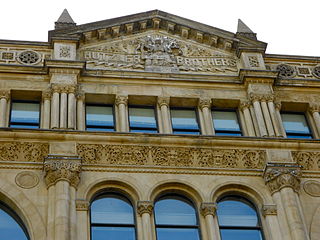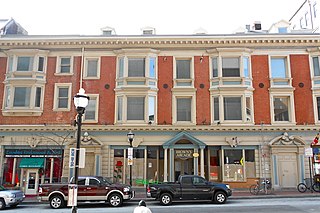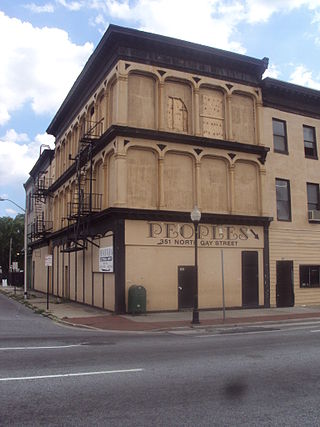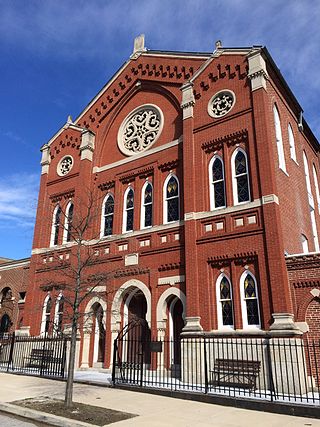53 Sights in Baltimore, United States (with Map and Images)
Legend
Welcome to your journey through the most beautiful sights in Baltimore, United States! Whether you want to discover the city's historical treasures or experience its modern highlights, you'll find everything your heart desires here. Be inspired by our selection and plan your unforgettable adventure in Baltimore. Dive into the diversity of this fascinating city and discover everything it has to offer.
Sightseeing Tours in BaltimoreActivities in Baltimore1. Francis Scott Key Bridge
The Francis Scott Key Bridge is a partially collapsed bridge in the Baltimore metropolitan area, Maryland. Opened in 1977, it collapsed on March 26, 2024, after a container ship struck one of its piers. Officials have announced plans to replace the bridge by fall 2028.
2. USS Constellation

USS Constellation is a sloop-of-war, the last sail-only warship designed and built by the United States Navy. She was built at the Gosport Shipyard between 1853 and 1855. She was named for the earlier frigate of the same name that had been broken up in 1853. The sloop's primary armament was 8-inch (203 mm) shell-firing guns and four 32-pounder long guns, though she carried other guns as well, including two Parrott rifle chase guns. Constellation's career as a front-line unit was relatively short; after entering service in 1855, she served with the Mediterranean Squadron until 1858, and in 1859, she was assigned as the flagship of the Africa Squadron, where she served with the African Slave Trade Patrol. During the American Civil War (1861–1865), the ship returned to the Mediterranean to patrol for Confederate vessels. In late 1864, she returned to the United States to be decommissioned, as most of her crews' enlistments had expired. She spent the rest of the war out of service.
Wikipedia: USS Constellation (1854) (EN), Website, Opening Hours, Heritage Website
3. NS Savannah
NS Savannah was the first nuclear-powered merchant ship. She was built in the late 1950s at a cost of $46.9 million and launched on July 21, 1959. She was funded by United States government agencies. Savannah was a demonstration project for the potential use of nuclear energy. The ship was named after SS Savannah, the first steamship to cross the Atlantic ocean. She was in service between 1962 and 1972 as one of only four nuclear-powered cargo ships ever built.
4. Baltimore Museum of Art
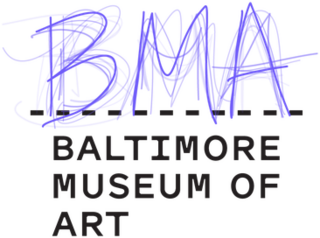
The Baltimore Museum of Art (BMA) in Baltimore, Maryland, is an art museum that was founded in 1914. The BMA's collection of 95,000 objects encompasses more than 1,000 works by Henri Matisse anchored by the Cone Collection of modern art, as well as one of the nation's finest holdings of prints, drawings, and photographs. The galleries currently showcase collections of art from Africa; works by established and emerging contemporary artists; European and American paintings, sculpture, and decorative arts; ancient Antioch mosaics; art from Asia, and textiles from around the world.
5. Walters Art Museum
The Walters Art Museum is a public art museum located in the Mount Vernon neighborhood of Baltimore, Maryland. Founded and opened in 1934, it holds collections from the mid-19th century that were amassed substantially by major American art and sculpture collectors, including William Thompson Walters and his son Henry Walters. William Walters began collecting when he moved to Paris as a nominal Confederate loyalist at the outbreak of the American Civil War in 1861, and Henry Walters refined the collection and made arrangements for the construction what ultimately was Walters Art Museum.
6. Basilica of the National Shrine of the Assumption of the Blessed Virgin Mary
The Basilica of the National Shrine of the Assumption of the Blessed Virgin Mary, also called the Baltimore Basilica, is a Catholic cathedral in Baltimore, Maryland. It was the first Catholic cathedral built in the United States after the nation's founding, and was among the first major religious buildings constructed therein after the adoption of the U.S. Constitution.
Wikipedia: Basilica of the National Shrine of the Assumption of the Blessed Virgin Mary (EN)
7. Baltimore and Ohio Railroad Museum
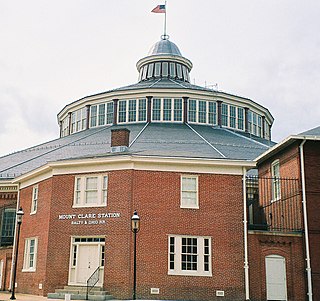
The B&O Railroad Museum is a museum and historic railway station exhibiting historic railroad equipment in Baltimore, Maryland. The Baltimore and Ohio Railroad (B&O) company originally opened the museum on July 4, 1953, with the name of the Baltimore & Ohio Transportation Museum. It has been called one of the most significant collections of railroad treasures in the world and has the largest collection of 19th-century locomotives in the U.S. The museum is located in the Baltimore and Ohio Railroad's old Mount Clare Station and adjacent roundhouse, and retains 40 acres of the B&O's sprawling Mount Clare Shops site, which is where, in 1829, the B&O began America's first railroad and is the oldest railroad manufacturing complex in the United States.
8. USCGC Taney
WPG/WAGC/WHEC-37, launched as USCGC Roger B. Taney and for most of her career called USCGC Taney, is a United States Coast Guard high endurance cutter notable as the last warship floating which fought in the attack on Pearl Harbor. She was named for Roger B. Taney (1777–1864), who served as U.S. Attorney General, Secretary of the Treasury, and Chief Justice of the United States.
9. Washington Monument
The Washington Monument is the centerpiece of intersecting Mount Vernon Place and Washington Place, an urban square in the Mount Vernon-Belvedere neighborhood north of downtown Baltimore, Maryland. It was the first major monument to honor George Washington (1732–1799).
10. USS Torsk
USS Torsk, hull number SS-423, is a Tench-class submarine built for the United States Navy during World War II. Armed with ten torpedo tubes, the Tench-class submarines were incremental developments of the highly-successful Gato-class submarines that formed the backbone of the US Navy's submarine force during the war. Torsk was laid down at the Portsmouth Navy Yard in June 1944, was launched in September that year, and commissioned in December.
11. Edgar Allen Poe House
The Edgar Allan Poe House and Museum, located at 203 North Amity St. in Baltimore, Maryland, is the former home of American writer Edgar Allan Poe in the 1830s. The small unassuming structure, which was opened as a writer's house museum in 1949, is a typical row home. It was designated a National Historic Landmark in 1972.
12. SS John W. Brown
SS John W. Brown is a Liberty ship, one of two still operational and one of three preserved as museum ships. As a Liberty ship, she operated as a merchant ship of the United States Merchant Marine during World War II and later was a vocational high school training ship in New York City for many years. Now preserved, she is a museum ship and cruise ship berthed at Pier 13 in Baltimore Harbor in Maryland.
13. Green Mount Cemetery
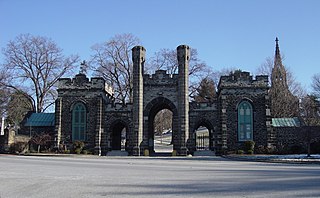
Green Mount Cemetery is a historic rural cemetery in Baltimore, Maryland, United States. Established on March 15, 1838, and dedicated on July 13, 1839, it is noted for the large number of historical figures interred in its grounds as well as many prominent Baltimore-area families. It retained the name Green Mount when the land was purchased from the heirs of Baltimore merchant Robert Oliver. Green Mount is a treasury of precious works of art, including striking works by major sculptors including William H. Rinehart and Hans Schuler.
Wikipedia: Green Mount Cemetery (EN), Website, Facebook, Yelp, Foursquare
14. The Patricia and Arthur Modell Performing Arts Center at the Lyric
Lyric Opera of Chicago is an American opera company based in Chicago, Illinois. The company was founded in Chicago in 1954, under the name 'Lyric Theatre of Chicago' by Carol Fox, Nicola Rescigno and Lawrence Kelly, with a season that included Maria Callas's American debut in Norma. Fox re-organized the company in 1956 under its present name. Lyric is housed in a theater and related spaces in the Civic Opera Building. These spaces are now owned by Lyric.
15. Westminster Presbyterian Church
Westminster Hall and Burying Ground is a graveyard and former church located at 519 West Fayette Street in Baltimore, Maryland, United States. It is currently part of the grounds of the University of Maryland's School of Law. It occupies the southeast corner of West Fayette and North Greene Street on the west side of downtown Baltimore. It sits across from the Baltimore VA hospital and is the burial site of Edgar Allan Poe (1809–1849) and several politicians and military officials. The complex was declared a national historic district in 1974.
Wikipedia: Westminster Hall and Burying Ground (EN), Website
16. Emerson Bromo-Seltzer Tower
The Emerson Tower is a 15-story, 88 m (289 ft) clock tower erected in 1907–1911 at 21 South Eutaw Street, at the northeast corner of Eutaw and West Lombard Streets in downtown Baltimore, Maryland. It was the tallest building in the city from 1911 to 1923, until supplanted by the Citizens National Bank building at the southeast corner of Light and Redwood (German) Streets. It was designed by local architect Joseph Evans Sperry (1854–1930) for Isaac Edward Emerson (1859–1931), who invented the Bromo-Seltzer headache remedy.
17. American Visionary Art Museum
The American Visionary Art Museum (AVAM) is an art museum located in Baltimore, Maryland's Federal Hill neighborhood at 800 Key Highway. The museum specializes in the preservation and display of outsider art. The city agreed to give the museum a piece of land on the south shore of the Inner Harbor under the condition that its organizers would clean up residual pollution from a copper paint factory and a whiskey warehouse that formerly occupied the site. It has been designated by Congress as America's national museum for visionary art.
18. The Peale
The Peale is a community museum in Baltimore, Maryland, which opened in 2022 after a 5-year renovation. It occupies the first building in the Western Hemisphere to be designed and built specifically as a museum.
19. Chesapeake
United States lightship Chesapeake (LS-116/WAL-538/WLV-538) is a museum ship owned by the National Park Service and on a 25-year loan to Baltimore City, and is operated by Historic Ships in Baltimore Museum in Baltimore, Maryland. A National Historic Landmark, she is one of a small number of preserved lightships. Since 1820, several lightships have served at the Chesapeake lightship station and have been called Chesapeake. Lightships were initially lettered in the early 1800s, but then numbered as they were often moved from one light station to another. The name painted on the side of lightships was the short name of the Light Station they were assigned to and was the daytime visual aspect of the many Aids to Navigation on board lightships. The United States Coast Guard assigned new hull numbers to all lightships still in service in April 1950. After that date, Light Ship 116 was then known by the new Coast Guard Hull number: WAL-538. In January 1965 the Coast Guard further modified all lightship hull designations from WAL to WLV, so Chesapeake became WLV-538.
Wikipedia: United States lightship Chesapeake (LV-116) (EN), Website, Heritage Website
20. Port Discovery Children's Museum
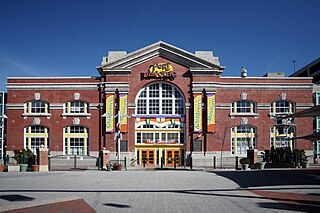
Port Discovery Children's Museum is a non-profit institution located in the historic Fish Market building in Baltimore, Maryland's Inner Harbor. It is 80,000 square feet and has three floors of exhibits and programs designed to be interactive and educational. It receives more than 265,000 visitors annually. The museum's focus is on children ages birth through 10 and their caregivers.
21. Seven Foot Knoll Lighthouse
The Seven Foot Knoll Light was built in 1855 and is the oldest screw-pile lighthouse in Maryland. It was located atop Seven Foot Knoll in the Chesapeake Bay until it was replaced by a modern navigational aid and relocated to Baltimore's Inner Harbor as a museum exhibit.
22. Flag House and Star-Spangled Banner Museum
The Star-Spangled Banner Flag House, formerly the Flag House & Star-Spangled Banner Museum, is a museum located in the Jonestown/Old Town and adjacent to Little Italy neighborhoods of eastern downtown Baltimore, Maryland, United States.
Wikipedia: Flag House & Star-Spangled Banner Museum (EN), Website
23. First Unitarian Church
The First Unitarian Church is a historic church and congregation at 12 West Franklin Street in Mount Vernon, Baltimore, Maryland. Dedicated in 1818, it was the first building erected for Unitarians in the United States. The church is a domed cube with a stucco exterior. The church, originally called the "First Independent Church of Baltimore", is the oldest building continuously used by a Unitarian congregation. The name was changed in 1935 to "The First Unitarian Church of Baltimore " following the merger with the former Second Universalist Church at East Lanvale Street and Guilford Avenue in midtown Baltimore. The American Unitarian Association and the Universalist Church of America (established 1866) representing the two strains of Unitarian Universalism beliefs and philosophies merged as a national denomination named the Unitarian Universalist Association in May 1961.
Wikipedia: First Unitarian Church (Baltimore, Maryland) (EN), Website
24. Battle Monument
The Battle Monument, located in Battle Monument Square on North Calvert Street between East Fayette and East Lexington Streets in Baltimore, Maryland, commemorates the Battle of Baltimore, with the British fleet of the Royal Navy's bombardment of Fort McHenry, the Battle of North Point, southeast of the city in Baltimore County on the Patapsco Neck peninsula, and the stand-off on the eastern siege fortifications along Loudenschlager and Potter's Hills, later called Hampstead Hill, in what is now Patterson Park since 1827, east of town.
25. Maryland Science Center
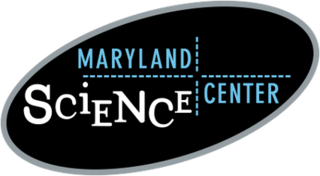
The Maryland Science Center (MSC), located in Baltimore's Inner Harbor, opened to the public in 1976. It includes three levels of exhibits, a planetarium, and an observatory. It was one of the original structures that drove the revitalization of the Baltimore Inner Harbor from its industrial roots to a thriving downtown destination. In 1987, an IMAX theater was added, but the museum continued to show its age as the end of the 20th century approached. In May 2004, a large addition to the property was opened, and the modernized hands-on exhibits now include more than two dozen dinosaur skeletons. Subjects that the center displays include physical science, space, and the human body.
26. Lloyd Street Synagogue
The Lloyd Street Synagogue is a Reform and Orthodox Jewish former synagogue located on Lloyd Street, Baltimore, Maryland, in the United States. The Greek Revival-style building is the third oldest synagogue building in the United States and was the first synagogue building erected in Maryland. The building was listed on the National Register of Historic Places in 1978 and designated as a Baltimore City Landmark in 1971.
27. Homewood Museum
The Homewood Museum is a historical museum located on the Johns Hopkins University campus in Baltimore, Maryland. It was listed as a National Historic Landmark in 1971, noted as a family home of Maryland's Carroll family. It, along with Evergreen Museum & Library, make up the Johns Hopkins University Museums.
28. Reginald F Lewis Museum of Maryland African-American History and Culture

The Reginald F. Lewis Museum of Maryland African American History & Culture is a resource for information about the lives and history of African American Marylanders. The Lewis Museum's mission is to collect, preserve, interpret, document, and exhibit the contributions of African American Marylanders using its collection of over 11,000 documents and objects and resources drawn from across the country.
Wikipedia: Reginald F. Lewis Museum of Maryland African American History & Culture (EN)
29. War Memorial Plaza
War Memorial Plaza is a public square, small park and space in Downtown Baltimore between City Hall and the War Memorial Building, between Holliday Street on the west, East Fayette Street on the south, North Gay Street on the east, and East Lexington Street on the north.
30. Jewish Museum of Maryland
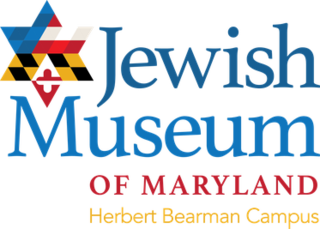
The Jewish Museum of Maryland is located in Baltimore, Maryland, United States. The museum tells the story of the American Jewish experience in the city of Baltimore and throughout the US state of Maryland.
31. Beth Am Synagogue
Beth Am is a Conservative Jewish congregation and synagogue, located in the Reservoir Hill community of Baltimore, Maryland, in the United States. It is one of two non-Orthodox synagogues in Baltimore's inner city. The current congregation was formed in 1974 by Dr. Louis L. Kaplan and other congregants after Chizuk Amuno put the building up for sale.
32. Columbus Obelisk
The Columbus Obelisk is one of three monuments to Christopher Columbus in Baltimore, Maryland. Erected on 12 October 1792, the obelisk is the oldest monument to Christopher Columbus in the United States.
33. Francis Scott Key Monument
The Francis Scott Key Monument is a monument to the author of the text of the American national anthem "The Star-Spangled Banner", in the Bolton Hill neighborhood of Baltimore, Maryland, United States. The monument features a gilded statue of Lady Columbia waving a flag on a pedestal of four stone columns, surrounded on two sides by gilded reliefs depicting the Battle of Baltimore. At the pedestal's base is a bronze statue of Francis Scott Key standing in a rowboat carved from stone.
34. Howard P. Rawlings Conservatory
The Howard Peters Rawlings Conservatory and Botanic Gardens of Baltimore, often known as the Baltimore City Conservatory, is a historic conservatory / greenhouse and botanical garden located in Druid Hill Park at 3100 Swann Drive, in the northwest area of Baltimore, Maryland.
Wikipedia: Howard Peters Rawlings Conservatory and Botanic Gardens of Baltimore (EN), Website
35. Alex. Brown & Sons Building
The Alex. Brown & Sons building is a historic structure located at 135 East Baltimore Street in Baltimore, Maryland. During the 20th century it served as the corporate headquarters for the banking firm Alex. Brown & Sons, the oldest in the United States when it was purchased by Bankers Trust in 1997. The two-story building, completed in 1901 and designed by the partnership of J. Harleston Parker and Douglas H. Thomas. Jr., survived the 1904 Baltimore fire. The building was modified on the Calvert Street side and in the interior by the firm Beecher, Friz, and Gregg in 1905.
36. St. Michael the Archangel
St. Michael the Archangel Ukrainian Catholic Church is a Ukrainian Catholic church located in Baltimore, Maryland. It was founded to initially serve the needs of the Ukrainian immigrant community in Baltimore.
Wikipedia: St. Michael the Archangel Ukrainian Catholic Church (EN)
37. National Katyń Memorial
The National Katyń Memorial is a monument in Baltimore, Maryland, which memorializes the victims of the 1940 Katyn massacre of Polish nationals carried out by Soviet forces. Baltimore's Polish-American community was instrumental in having the monument built. The monument was unveiled in 2000 and is the tallest statue in Baltimore. The statue itself is 44 feet high, the whole monument, with base, is 56 feet.
38. Henry August Rowland House
The Henry August Rowland House is a historic row house at 915 Cathedral Street in Baltimore, Maryland. Built in the 1880s, this nondescript row house is historically important as the home of physicist Henry Augustus Rowland from 1889-90 until his death in 1901. It was listed on the National Register of Historic Places and declared a National Historic Landmark in 1975.
39. Union Soldiers and Sailors Monument
The Union Soldiers and Sailors Monument is a figural group sculpted by Adolph Alexander Weinman atop a pedestal designed by architect Albert Randolph Ross in Baltimore, United States, commemorating the Union military personnel of the American Civil War. The figural group shows Bellona and the personification of Victory together with a citizen-soldier turning from his plow and anvil as he dons a uniform and sword belt. Behind Bellona there is also a fig tree. The entire group stands on 12-foot high granite base, which has two relief panels. The monument's dimensions are approximately 10 ft.x102 in.x150 in. (sculpture) and 139x102x150 in. (base).
40. Staybridge Suites
The Chamber of Commerce Building is a historic office building located at Baltimore, Maryland, United States. It is a Renaissance Revival-style of architecture with a brown glazed brick building five floors in height, eleven bays long on the west/east sides, facing Commerce Street on the west and Custom House Avenue to the east. Three bays wide (north/south) on the Water Street side, and rebuilt 1904–1905, using still standing walls / facades. It was built during the rebuilding of the old financial district in Downtown Baltimore following the Great Baltimore Fire of Sunday/Monday, February 7–8, 1904 and features many terra cotta decorative elements. The rebuilt structure was designed by well-known Baltimore architect Charles E. Cassell. The original pre-fire building was designed by locally famous and prominent architect John Rudolph Niernsee in 1880 and was used by the old Corn and Flour Exchange, which maintained a trading floor on the fifth level.
Wikipedia: Chamber of Commerce Building (Baltimore, Maryland) (EN)
41. Paca-Pratt Building
Sonneborn Building, also known as Paca-Pratt Building, is a historic loft building in Baltimore, Maryland, United States. Designed by Theodore Wells Pietsch, it is a nine-story loft building constructed in 1905 of "fireproof" reinforced-concrete construction, faced in buff-colored brick, with a coursed ashlar foundation and stone trim. Its detailing reflects the Neoclassical Revival of the early 20th century. It was built for Henry Sonneborn and Company as a vertical clothing manufactory and was the tallest and largest strictly manufacturing building in the city of Baltimore.
42. National Slavic Museum

The National Slavic Museum in Fell's Point, Baltimore is a museum dedicated to the documentation of the Polish and Slavic heritage of Baltimore, including Baltimore's Belarusian, Bulgarian, Carpatho-Rusyn, Croatian, Czech, Lemko, Moravian, Russian, Serbian, Slovak, Slovene, and Ukrainian heritage.
43. Faust Brothers Building
Faust Brothers Building, also known as the Trading Post, is a historic retail building located at Baltimore, Maryland, United States. It is a five-story brick commercial building with a cast-iron façade above an altered storefront, erected about 1875. It is the only known example of cast-iron fronts on the front and back sides.
44. Hutzler Brothers Palace Building
The Hutzler Brothers Palace Building is a historic flagship department store building located at Baltimore, Maryland, United States and built by Hutzler's. It was constructed in 1888, with a south bay added in 1924.
45. Wilkens-Robins Building
Wilkens–Robins Building is a historic loft building located at Baltimore, Maryland, United States. It was built in 1871 and is a five-story, six-bay brick structure with a cast iron front. It is approximately 80 feet (24 m) tall, 50 feet (15 m) wide, and 110 feet (34 m) deep with a gently sloping roof. The facade features an expanse of oversized windows and are the highlights of one of the few surviving cast-iron facades in Baltimore.
46. Brown's Arcade
Brown's Arcade is a historic retail and office building located at Baltimore, Maryland, United States. It consists of four early 19th century brick rowhouses. Architect Henry F. Brauns redesigned a row of four, three story buildings in 1904 into the original Brown's Arcade, with the application of Colonial Revival details over the original Federal-style façade. It was converted to a series of small shops; bordering a straight central walkway with offices above. The rear courtyard contains two-story brick structures with shed roofs and a two-story Renaissance Revival style structure.
47. L. Frank & Son Building
L. Frank & Son Building is a historic retail building located at Baltimore, Maryland, United States. It is a four-story brick commercial building with a cast-iron façade, built about 1875. It was constructed for Samuel Stein & Bros., and occupied by a dealer in iron ranges and furnaces, and later a series of shoe and clothing manufacturers.
48. Garrett Jacobs Mansion
The Garrett Jacobs Mansion is a historic home located in the Mount Vernon neighborhood of Baltimore, Maryland. Built in 1853 by Samuel George, the home gets its name from its last and most famous owner, Mary Frick Garrett Jacobs, who, with her husband Robert Garrett, transformed the home into a prime example of the Gilded Age mansions of the city.
49. Terminal Warehouse
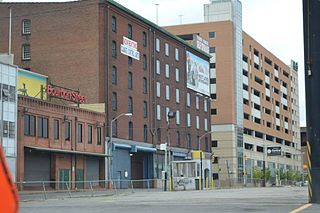
Terminal Warehouse, also known as the Flour Warehouse of Terminal Corporation, is a historic warehouse building located at Baltimore, Maryland, United States. It has a common bond brick exterior accented by a rusticated brownstone foundation built originally in 1894, with a steel beam addition constructed in 1912. It was designed by noted Baltimore architect Benjamin B. Owens.
50. Benson Building
Benson Building, also known as the IPC Building, is a historic retail and office located at Baltimore, Maryland, United States. It is on the corner of East Franklin and North Charles Streets. The main side is on Charles Street and has seven bays with store windows and entrances on the first floor, and office windows on the upper floors. The recessed storefronts feature bronzed aluminum infill panels above and below the glass panes. It was constructed in 1911 and the principal original occupant was C.J. Benson and Company, a local interior decorating and furniture establishment.
51. Old Town Savings Bank
Old Town Savings Bank, also known as Cala Brothers, is a historic loft building located at Baltimore, Maryland, United States. It is a three-story loft structure designed by architect Frank E. Davis (1839-1921) and constructed in 1871. Both the street façades are cast iron, four bays wide on Gay Street and eight bays wide on Exeter Street. It is a Full Cast Iron Front building. It operated as a bank until about 1940, then housed a wholesale distributor of tobacco and confectionery.
52. Brewers Exchange
Brewers Exchange, also known as Murdock Place, is a historic office building located at Baltimore, Maryland, United States. It is a three-story Renaissance Revival style building designed by Joseph Evans Sperry (1854-1930) and built in 1896. The façade is faced with terra cotta and includes such decorative elements as two-story half-round Ionic pilasters, cartouches, pediments, window surrounds, a garland frieze, and a balustrade at the edges of a flat roof. It was used by the exchange for only a short time.
53. Chizuk Amuno Synagogue;B'nai Israel Synagogue
B'nai Israel Synagogue is a Modern Orthodox synagogue located in the historic Jonestown neighborhood, near downtown and the Inner Harbor of Baltimore, Maryland, in the United States. The synagogue is one of the oldest synagogue buildings in the United States.
Share
How likely are you to recommend us?
Disclaimer Please be aware of your surroundings and do not enter private property. We are not liable for any damages that occur during the tours.



